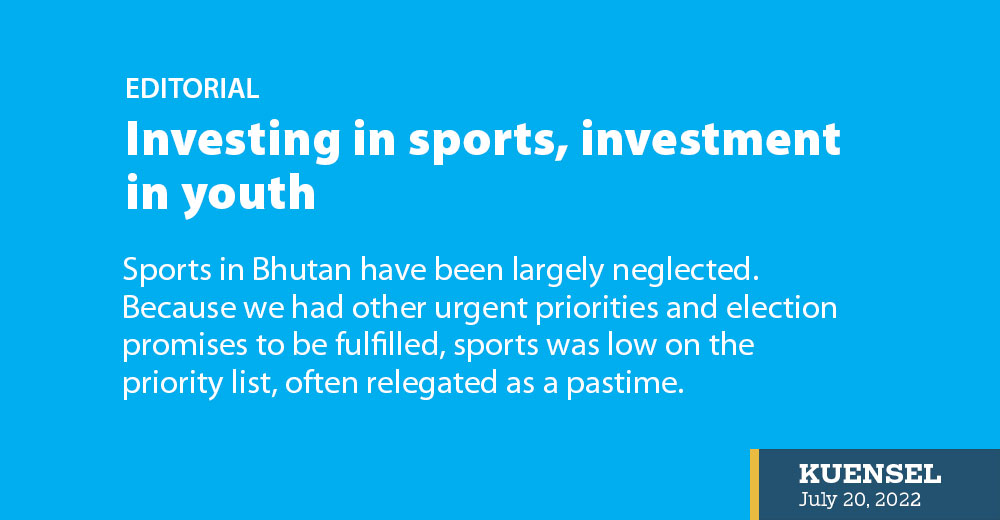Sports in Bhutan have been largely neglected. Because we had other urgent priorities and election promises to be fulfilled, sports was low on the priority list, often relegated as a pastime.
Sports couldn’t develop or didn’t see the real impetus because they were placed under ministries, especially with the education ministry – as sports was equated to school children. There was no real leadership to develop sports or convince policy makers to invest in sports infrastructure.
Fortunately, it is changing and this is good news. We see sports infrastructure developing and our sportsmen becoming brand ambassadors, even if not intended. Although only a handful, Bhutanese trained in sports academies and clubs are becoming competitive in the region. It is an encouraging sign.
What is more welcoming and encouraging is the recognition of sports. Despite the hurdles posed by the Covid-19 pandemic, there is good progress in building our sports infrastructure. Of the 13 major sports infrastructure projects under the Bhutan Olympic Committee (BOC) in the 12th Plan, five have been completed so far. The astro-turf football grounds, tennis courts, lighting of turf football ground and construction of outdoor basketball and volleyball courts will all encourage more to look at sports differently.
That sports or investments in it should be attributed to the leadership that recognised sports as an important sector. Under the leadership of His Royal Highness Dasho Jigyel Ugyen Wangchuck, a sportsman himself, sports has seen renewed new initiatives if not newer visions. From right strategies to making right contacts, or sports federations or bodies are finding it easier to collaborate with regional or international sporting bodies to develop and invest in sports.
Above all, investing in sports will not go into waste. It is investing in our youth, our future. Bhutanese for decades had been known for being good in sports. Lack of investment or infrastructure had been the biggest hurdle. The Bhutanese population is dominated by youth and critical national issues are also related to youth, be it employment, social problems including drug abuse or engaging in mass brawl. One common complaint among our youth or parents is the lack of sports facilities to engage our youth meaningfully. Sports facility is one important factor. We may have a dozen archery fields in Thimphu for the adults, but the football or futsal grounds for the youth are limited or beyond affordability.
Our youth population represents an incredible amount of energy that needs to be tapped and to be channelled in the right direction. Sports is one area that will develop healthy habits if not produce professionals. Investment in sports infrastructure, it is said, is the best investment in youth.


